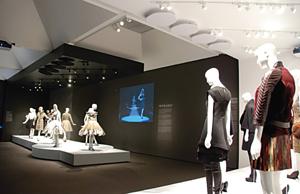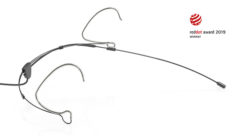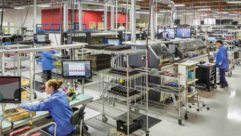

Considerations In Museum AV
Designing AV systems for museums means various things, from installation in auditoriums to AV in exhibits. The latter can prove challenging, particularly if the exhibits themselves require audiovisual elements.
Designing AV systems for museums means various things, from installation in auditoriums (see “Let the Music Play,” page 38) to AV in exhibits. The latter can prove challenging, particularly if the exhibits themselves require audiovisual elements.
Holosonic Research Labs’ Audio Spotlight directional speakers were installed last summer in a fashion exhibit at Boston’s Museum of Fine Arts.
A museum exhibition often includes several separate AV experiences, including perhaps an orientation theater, several mini or small-group theaters, and stand-alone one-to-one multimedia exhibits. Integrators, consultants, and designers need to ensure the AV from one space doesn’t interfere with the enjoyment of another.
Confining an AV experience to a particular physical area relies on a combination of factors, including:
- Being able to physically isolate media elements within the plan, often accomplished by setting up the media playback components away from competing, adjacent systems;
- Working with an acoustical consultant who can suggest the utilization and placement of as much absorptive material as possible to suppress sound spill into adjacent areas;
- Using loudspeaker types, quantities, and placement to support the containment strategy.
When it comes to setting up speakers, there are a few ways you can do it in order to prevent sound from spilling over.
- Use a larger quantity of loudspeakers than normal but with lower-volume settings.
- Place the loudspeakers so they’re aimed at an absorptive surface.
- Use a loudspeaker that has a dispersion pattern that closely matches the coverage area.
Loudspeakers that might fit the bill include hemispherical-reflector based speakers, parabolics, ultrasonics, beam-shaping or beam-steering speakers, and steered line arrays. While hemispherical-reflector speakers have been popular, ultrasonic and beam-shaping speakers have become competitively priced.
SOURCE: AV DESIGN REFERENCE MANUAL, INFOCOMM INTERNATIONAL/BICSI










